## Introduction
The concept of prefab building has revolutionized the construction industry, offering an innovative and sustainable solution for housing needs. Among its many applications, mobile container houses have emerged as a particularly effective option for temporary accommodations in challenging environments, such as mining sites. This article delves into the world of prefab building and mobile container houses, focusing on their application in providing dormitories for mining sites, with a spotlight on the pioneering efforts of the Lida Group. Through this exploration, we will uncover the benefits, challenges, and future prospects of using shipping containers as versatile building blocks for modern living spaces.
### Historical Context and Evolution
The history of prefab building dates back to the early 20th century when prefabricated components were first used to construct homes rapidly and efficiently. However, it wasn’t until the mid-20th century that shipping containers were introduced as a standardized method for transporting goods across seas. Initially designed for durability and ease of handling, these steel boxes soon became symbols of global trade. By the late 1980s, architects began experimenting with repurposing retired containers into habitable structures. The idea quickly gained traction due to its environmental benefits and cost-effectiveness, leading to the emergence of a new architectural movement.
Over time, advancements in technology and design have transformed what was once considered a niche market into a mainstream trend. Today, prefab buildings and mobile container houses are recognized not only for their aesthetic appeal but also for their practical applications in various sectors, including temporary accommodations for workers in remote locations and innovative urban developments.
## Prefab Building: Revolutionizing Construction Practices
Prefab building, or prefabricated construction, involves assembling components off-site and then transporting them to the final location for installation. This approach offers numerous advantages over traditional construction methods, making it an attractive option for developers and builders alike. One of the most significant applications of prefab building is the use of shipping containers as building modules.
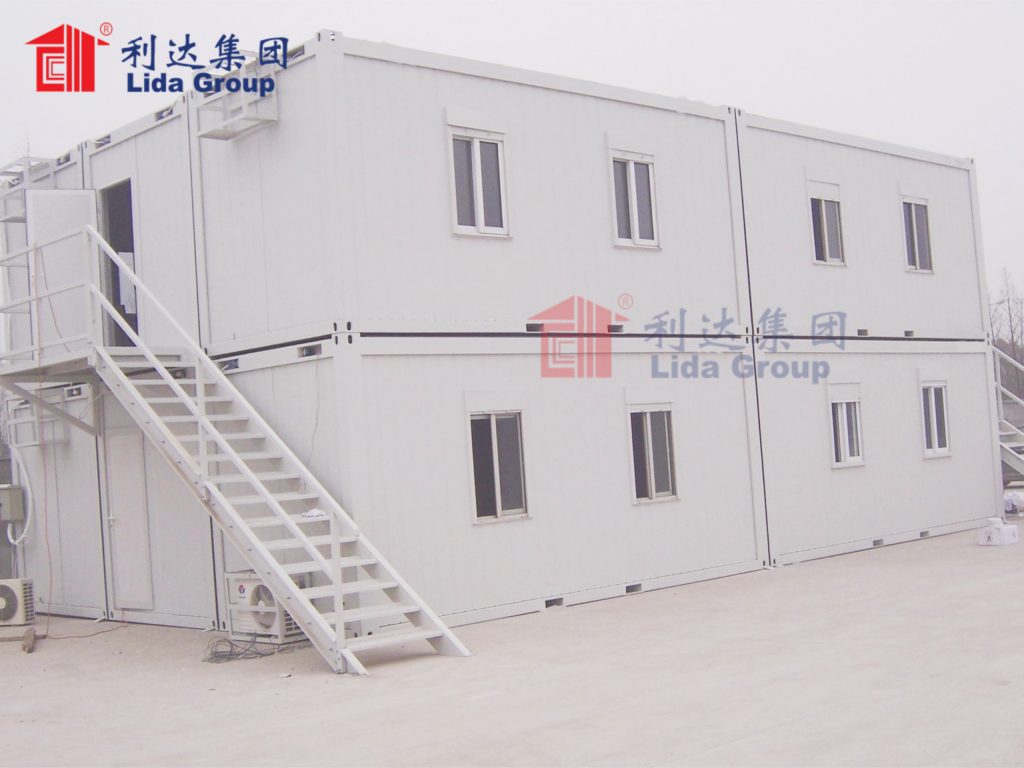
### Efficiency and Speed
One of the primary benefits of prefab building using mobile container houses is the efficiency and speed of construction. Unlike traditional brick-and-mortar buildings, which require extensive time and resources for construction, container modules can be prefabricated off-site and transported whole to their destination. Once delivered, minimal assembly is needed before the units are operational. This streamlined process significantly reduces project timelines, allowing businesses to mobilize workforce faster and commence operations sooner.
For example, in large-scale infrastructure projects such as highways, bridges, and railways, prefab container houses can drastically cut down on construction times. In remote areas where access to materials and skilled labor is limited, the ability to rapidly deploy functional living quarters and workspaces is invaluable. Companies like the Lida Group have leveraged this advantage to deliver timely and reliable solutions for clients worldwide.
### Customization and Flexibility
Another advantage of prefab building lies in the customization options available with container-based designs. Depending on the specific requirements of each project, modules can be configured to meet diverse needs. For instance, some may serve as sleeping quarters, others as dining areas, offices, classrooms, or medical facilities. Additionally, multiple containers can be stacked vertically or arranged horizontally to create larger complexes, adapting seamlessly to varying site conditions and occupancy levels.
Lida Group excels in providing customized solutions tailored to client specifications. Their team of experts works closely with customers to understand unique project requirements and develop designs that optimize space utilization and functionality. Advanced engineering techniques ensure that each module integrates seamlessly into the overall structure, creating cohesive and aesthetically pleasing environments.
### Cost-Effectiveness
Cost considerations play a critical role in deciding between different construction methods. Prefab container houses generally present a more economical option compared to conventional alternatives due to lower material costs and reduced labor expenses associated with their installation. Furthermore, because these structures are reusable and relocatable, companies can redeploy them across multiple locations without incurring additional fabrication costs. Over time, this leads to substantial savings and improved return on investment.
Moreover, the inherent modularity of container houses allows for phased development, enabling clients to expand or contract their facilities as needed. This flexibility reduces the need for costly renovations or demolitions, further enhancing long-term financial viability.
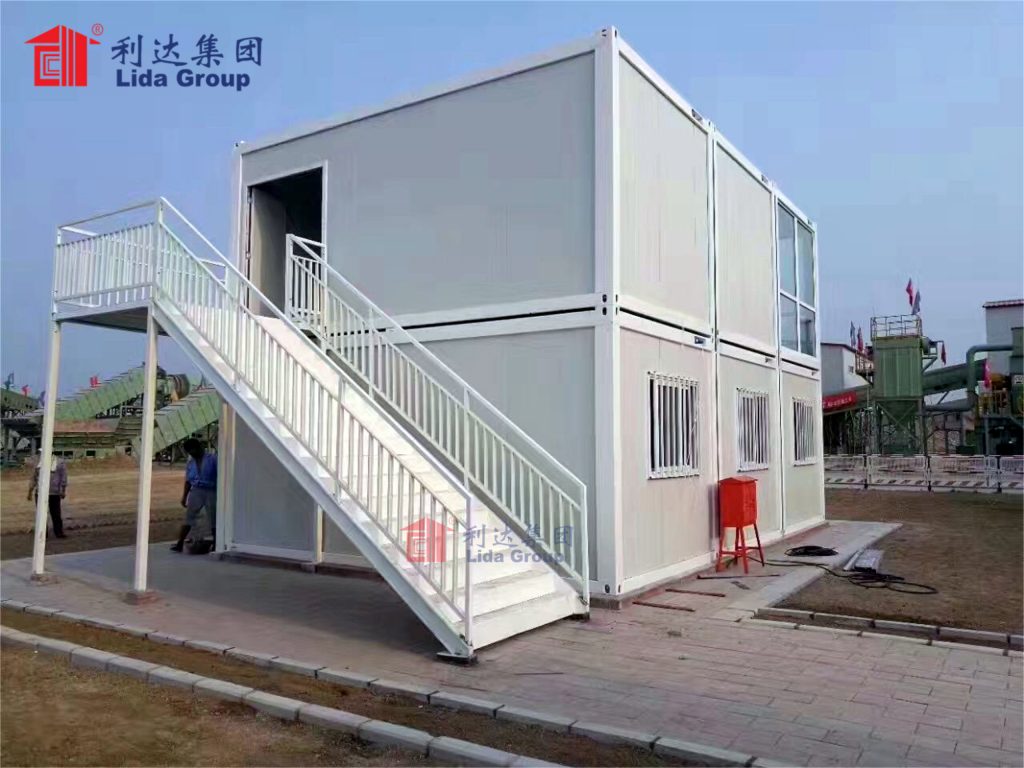
## Mobile Container House: Flexibility Redefined
Mobile container houses represent a specialized subset of prefab building applications, designed specifically for scenarios requiring frequent relocation. Whether supporting seasonal agricultural workers, disaster relief efforts, military operations, or temporary events, mobile container units offer unparalleled flexibility and mobility.
### Portability and Reliability
The portability of mobile container houses is one of their standout features. Built on sturdy chassis equipped with wheels and towing hitches, these modules can be easily transported by truck or trailer to different locations as needed. Their robust construction ensures reliability and durability, capable of withstanding rough terrain and adverse weather conditions during transit.
Upon arrival at the new location, setup is quick and straightforward. Most units come pre-wired and plumbed, requiring only basic connections to utility services before becoming fully functional. This seamless transition minimizes downtime and allows for immediate occupation, ensuring continuity of operations regardless of geographic changes.
### Scalability and Versatility
Scalability is a critical consideration in mobile container housing solutions. Units can be stacked vertically or arranged horizontally to create larger complexes, accommodating varying numbers of occupants. Interconnected pathways and shared amenities facilitate social interaction and community building among residents. Furthermore, the versatility of container modules enables them to be adapted for diverse purposes beyond just housing, such as medical clinics, classrooms, retail spaces, and command centers.
In emergency situations, such as natural disasters or humanitarian crises, mobile container housing provides rapid response capabilities. Pre-fabricated units can be deployed swiftly to affected areas, offering safe and comfortable shelter for displaced populations. Lida Group’s expertise in this area has been instrumental in delivering effective solutions for disaster recovery and aid distribution.
### Enhanced Safety and Comfort
Safety remains paramount in any workplace setting, including worker accommodations. Modern mobile container houses incorporate advanced insulation materials and fire-resistant coatings to ensure occupant safety even under harsh weather conditions. Moreover, manufacturers like the Lida Group adhere strictly to international building codes and standards, guaranteeing high-quality products that prioritize occupant wellbeing.
Comfort is equally important for fostering a positive living environment. Contemporary designs feature spacious interiors, ample natural lighting, and efficient ventilation systems, creating pleasant atmospheres conducive to rest and relaxation. Amenities such as private bathrooms, communal kitchens, and entertainment areas further enhance the overall experience, making long-term stays more enjoyable.
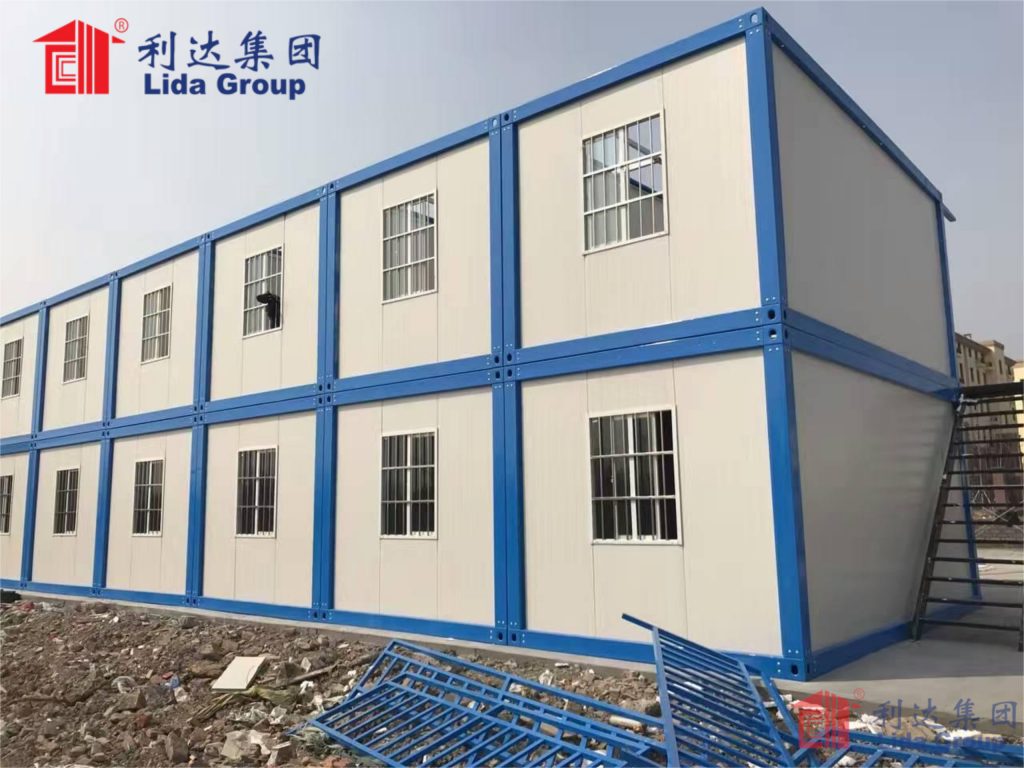
## Application in Mining Site Dormitories
Mining operations often take place in remote and challenging environments, requiring specialized accommodation solutions for workers. Mobile container houses have proven to be an ideal choice for providing temporary housing at mining sites, offering a range of benefits that cater to the unique demands of this industry.
### Rapid Deployment and Adaptability
One of the key advantages of mobile container houses for mining site dormitories is their rapid deployment capability. Given the transient nature of mining projects, it is crucial to establish functional living quarters quickly and efficiently. Mobile container houses can be transported to the site in a matter of days and assembled with minimal effort, minimizing downtime and ensuring that workers have access to comfortable accommodations from day one.
Additionally, the adaptability of these units allows for easy expansion or contraction based on changing workforce sizes. As mining operations progress through different phases, the number of employees may fluctuate. Mobile container houses can be added or removed as needed, providing a flexible and scalable solution that accommodates varying occupancy levels.
### Durability and Resilience
Mining sites are often located in harsh environments characterized by extreme temperatures, strong winds, and heavy rainfall. Mobile container houses are built to withstand these challenging conditions, ensuring the safety and comfort of occupants. Robust construction materials and advanced engineering techniques enhance the structural integrity of these units, making them resilient against environmental stresses.
Lida Group’s mobile container houses undergo rigorous testing to verify performance under extreme conditions. Each unit is designed to meet stringent international building codes and standards, providing peace of mind to operators who rely on these structures for critical infrastructure.
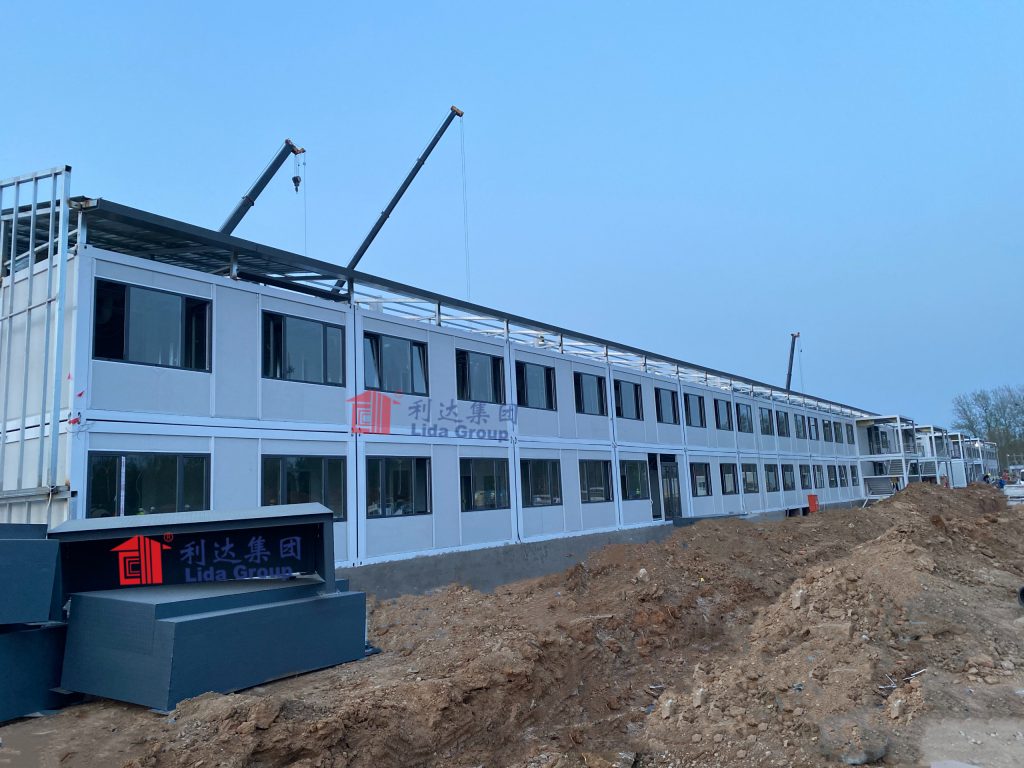
### Cost-Effective and Sustainable
Cost considerations are a significant factor in selecting accommodation solutions for mining sites. Mobile container houses offer a cost-effective alternative to traditional construction methods, reducing both initial capital expenditures and ongoing maintenance costs. The modular nature of these units allows for efficient resource allocation, minimizing waste and maximizing value.
Furthermore, mobile container houses promote sustainability by utilizing recycled materials and incorporating energy-efficient features. Solar panels, water recycling systems, and advanced insulation materials reduce the environmental footprint of these structures while lowering operational costs. Lida Group prioritizes sustainability in all aspects of production, aligning with broader industry trends toward greener building practices.
### Enhanced Worker Welfare
Providing high-quality living conditions is essential for maintaining worker morale and productivity at mining sites. Mobile container houses designed by Lida Group feature modern amenities and thoughtful layouts that enhance the overall living experience. Spacious interiors, well-lit common areas, and private sleeping quarters contribute to a comfortable and inviting atmosphere, promoting a sense of community and well-being among residents.
Additional facilities such as recreational spaces, dining areas, and medical clinics further improve the quality of life for workers stationed at remote locations. By investing in superior accommodation solutions, mining companies can attract and retain top talent, ultimately driving operational success.
## Case Study: Lida Group’s Leadership in Container Housing Solutions
The Lida Group has emerged as a leader in developing cutting-edge container house solutions, setting new standards for quality, innovation, and sustainability. With years of experience in prefabricated construction, this company continues to push boundaries, delivering products that exceed customer expectations.
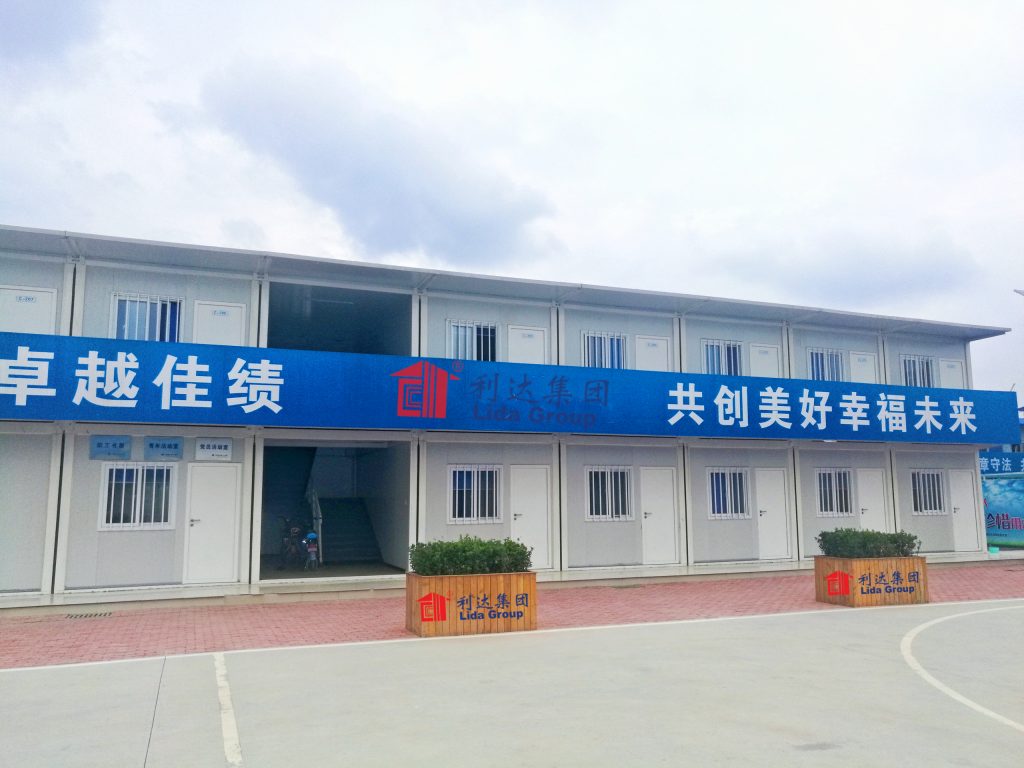
### Cutting-Edge Design and Engineering
Lida Group leverages state-of-the-art technology and engineering principles to craft unique container house models that combine functionality with aesthetics. Their R&D team continuously explores new ways to optimize space utilization, integrate smart home features, and improve structural integrity. For example, advanced ventilation systems and thermal insulation materials enhance energy efficiency, while solar panels and water recycling technologies promote environmental sustainability.
Innovative design elements include foldable extensions, sliding walls, and multi-level layouts, maximizing interior space and adaptability. Attention to detail extends to exterior finishes, incorporating weatherproof coatings and anti-corrosion treatments to prolong the lifespan of each unit. Overall, Lida Group’s commitment to excellence results in high-performance container houses that meet rigorous international building codes and standards.
### Comprehensive Support Services
Beyond supplying top-tier products, Lida Group offers comprehensive support services covering every aspect of the procurement process—from initial consultation to post-delivery maintenance. Professional consultants assist customers in selecting appropriate configurations based on project specifications and budget constraints. During implementation, skilled technicians oversee installation procedures to ensure seamless integration into existing infrastructure.
Afterward, dedicated after-sales teams remain available to address any concerns promptly, guaranteeing client satisfaction at all times. Regular inspections and preventive maintenance programs help maintain optimal performance and extend the service life of container houses. By providing end-to-end solutions, Lida Group establishes long-term partnerships built on trust and reliability.
### Commitment to Quality and Compliance
Adherence to stringent quality control measures and compliance with global regulatory frameworks sets Lida Group apart from competitors. Each container house undergoes rigorous testing to verify its performance against extreme temperatures, seismic activity, and other potential hazards. Certifications obtained from recognized authorities validate the reliability and safety of their offerings, giving buyers peace of mind knowing they invest in trustworthy solutions.
Furthermore, Lida Group prioritizes environmental responsibility through sustainable practices throughout the production cycle. From sourcing recycled materials to minimizing waste generation, they strive to reduce the ecological footprint associated with container house manufacturing. This holistic approach aligns with broader industry trends toward greener building methods and contributes positively to corporate social responsibility initiatives.
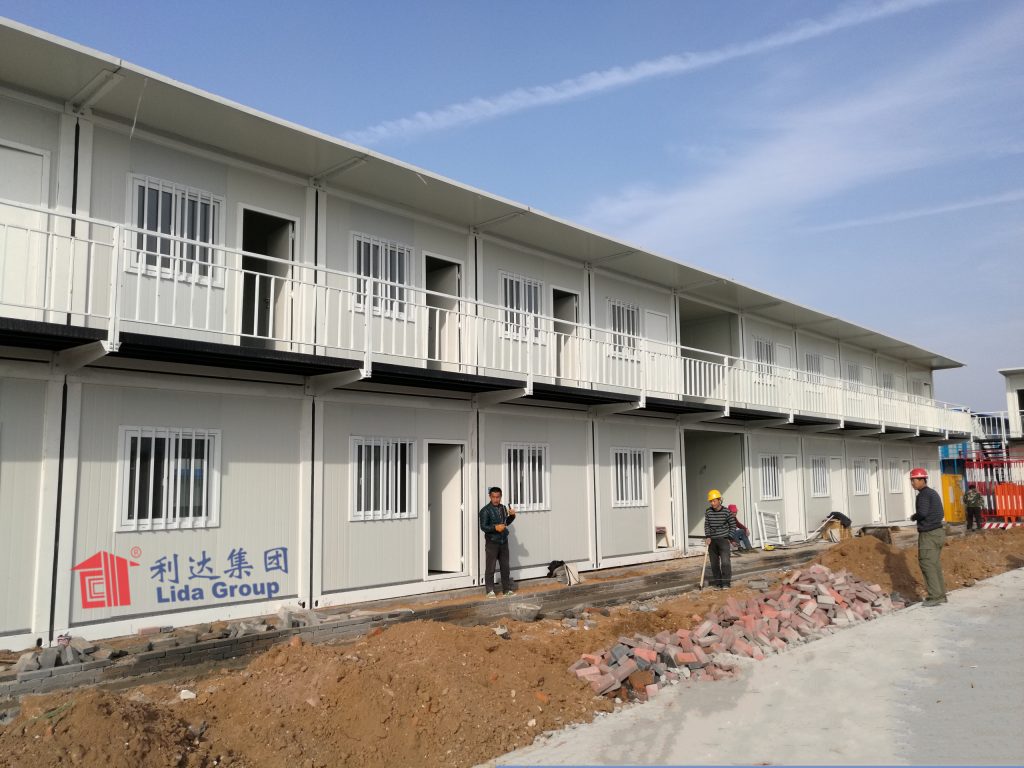
## Challenges and Future Prospects
While prefab container houses offer numerous advantages, there are also challenges to consider. Public perception remains a hurdle, with some individuals viewing container homes as unconventional or less desirable compared to traditional dwellings. Addressing these misconceptions requires education and awareness campaigns highlighting the benefits of container-based architecture.
Another challenge lies in navigating local regulations and zoning laws, which vary widely between jurisdictions. Advocacy efforts aimed at updating outdated policies can help facilitate wider adoption of container houses in residential and commercial settings. Collaboration between stakeholders, including government agencies, industry associations, and community organizations, will be essential in overcoming barriers and fostering supportive environments for innovation.
Looking ahead, the future of prefab container houses appears promising. Continued advancements in materials science, construction techniques, and smart technologies promise to enhance the capabilities and attractiveness of these structures. Increased emphasis on sustainability and resource conservation will drive further interest in container-based solutions, particularly in contexts where rapid deployment and adaptability are critical.
Additionally, emerging trends such as micro-living, co-housing, and nomadic lifestyles present opportunities for expanding the application of container houses beyond traditional boundaries. As society evolves, so too will the demand for flexible, efficient, and environmentally friendly housing options—areas where container houses excel.
## Conclusion
In conclusion, prefab container houses represent a transformative
approach to addressing accommodation challenges faced by industries relying on mobile workforces. Through partnerships with forward-thinking companies like the Lida Group, organizations can now provide superior living conditions for employees working remotely while promoting environmental responsibility and economic viability. The Lida Group’s commitment to innovation, quality, and sustainability has not only set new standards within the industry but also demonstrated the potential of container-based solutions in diverse applications.
As demand continues to grow, we can expect further advancements in this field, driving innovation and setting new benchmarks for excellence within the construction sector. The future of prefab container houses looks promising, with ongoing developments in materials science, construction techniques, and smart technologies that promise to enhance the capabilities and attractiveness of these structures. Increased emphasis on sustainability and resource conservation will continue to fuel interest in container-based solutions, particularly in contexts where rapid deployment and adaptability are critical.
Moreover, emerging trends such as micro-living, co-housing, and nomadic lifestyles present new opportunities for expanding the application of container houses beyond traditional boundaries. These trends reflect evolving societal needs and preferences, highlighting the versatility and adaptability of prefab container houses in meeting diverse housing demands. As society continues to embrace more flexible and sustainable living options, the role of prefab container houses is likely to expand, offering innovative solutions for both residential and commercial sectors.
In summary, the rise of prefab container houses marks a significant shift in modern construction practices, offering a balance between functionality, affordability, and environmental stewardship. The Lida Group’s leadership in this domain exemplifies the potential for container-based architecture to revolutionize the way we think about housing. By continuing to innovate and adapt to changing needs, the Lida Group and other pioneers in this field will play a crucial role in shaping the future of sustainable and efficient living spaces.
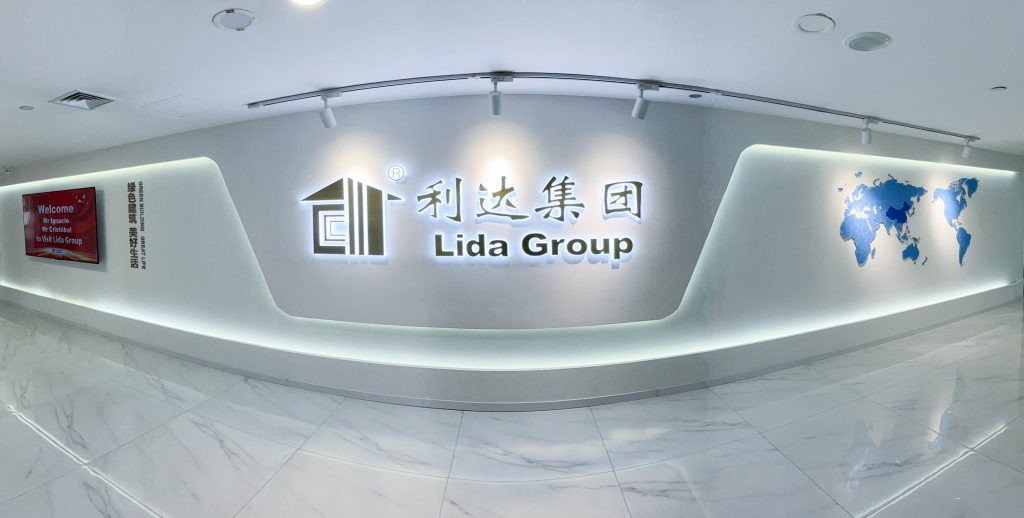
Related news
-
Container House: A Revolution in Modular Labor Camps and Temporary Workers' Dormitories by Lida Group
2025-01-20 16:17:18
-
Container Modular Houses by Lida Group: Where Sustainability Meets Style
2025-01-14 14:32:12
-
Temporary Labor Camps Reimagined: Lida Group Sets New Standards
2025-01-14 14:28:12
contact us
- Tel: +86-532-88966982
- Whatsapp: +86-13793209022
- E-mail: sales@lidajituan.com


